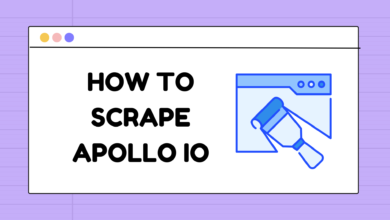HARO changing to Connectively in 2024: What are its implications in HARO link building?

Introduction
In the world of digital marketing and link building, HARO (Help a Reporter Out) has been a popular platform for connecting journalists with sources and providing valuable backlinks to websites. However, recent news of its rebranding as Connectively in 2024 has left many users wondering about the implications it may have on their current strategies.
In this document, we will provide an overview of HARO and the recent announcement, discuss the advantages for link builders and marketers utilizing HARO, address how the change will affect existing users, highlight potential challenges or issues that may arise from the switch, and offer tips and strategies for overcoming any obstacles introduced by the transition. By the end of this document, readers should have a clear understanding of the changes and be equipped with best practices for maximizing HARO link building in light of the changeover.
Overview of HARO and its recent announcement
HARO was founded in 2008 by Peter Shankman as a free platform for journalists to connect with sources for their stories. It quickly gained popularity among PR professionals, marketers, and small businesses looking to gain media coverage and valuable backlinks.
In early 2021, it was announced that HARO will be rebranding to Connectively in 2024. This move is said to have been motivated by the platform’s growth and desire to expand its services beyond just connecting journalists with sources.
Advantages for link builders and marketers utilizing HARO
One of the key advantages of using HARO for link building is the opportunity to receive high-quality backlinks from authoritative websites. By responding to journalist requests and providing valuable insights or information, users can secure links from reputable sources that can significantly boost their website’s search engine rankings.
Additionally, HARO link building provides a level playing field for both small and large businesses, as anyone can respond to journalist requests and potentially land media coverage and backlinks. This allows for equal opportunities and levels the playing field against bigger, more established companies. According to Ron Evan del Rosario, a HARO link builder and SEO specialist, HARO has been a valuable tool for securing links for his clients’ websites.
How the change will affect existing HARO users
The announcement of HARO changing to Connectively in 2024 has raised questions and concerns among current users. One major concern is whether the rebranding would result in any changes to the platform’s current functionalities and features.
According to the official announcement, Connectively will continue to operate as a free platform with the same core functions as HARO. However, there may be changes or updates to the interface and user experience. It is advisable for existing users to stay updated on any announcements from the Connectively team and adapt accordingly.
Potential challenges or issues that may arise from the switch
As with any major change, there is a possibility of challenges or issues arising from HARO’s rebranding to Connectively. One potential challenge could be a learning curve for existing users who have become accustomed to using HARO’s interface and features.
Another issue could be adapting to any changes in the platform’s functionality and user experience. It may take some time for users to adjust and find their way around the new interface.
Tips and strategies for overcoming potential obstacles introduced by the transition
Despite the potential challenges, there are steps and HARO tips that users can take to ensure a smooth transition to Connectively. These include staying updated on any announcements or changes from the team, familiarizing oneself with the new platform’s features and interface, and seeking support from the Connectively team if needed.
It is also advisable to continue utilizing HARO in its current form until the transition takes place, as it will still provide valuable opportunities for link building and media coverage. Additionally, users can start exploring other platforms or methods for link building to diversify their strategies and reduce reliance on one platform.
Best practices for getting the most out of HARO link building in light of the changeover
As the transition to Connectively approaches, it is crucial for users to make the most out of their remaining time on HARO. This includes being selective and strategic when responding to journalist requests, providing valuable insights and information, and actively networking with journalists.
It is also essential to track and measure the success of link building efforts on HARO, as this information can help in adapting strategies and making improvements when transitioning to Connectively. Additionally, users can use this time to build relationships with journalists and establish themselves as reliable sources for future requests.
Summarizing the key points
- HARO, a popular platform for connecting journalists with sources and providing backlinks, will be rebranding to Connectively in 2024.
- The advantages of using HARO for link building include the opportunity to secure high-quality backlinks and a level playing field for businesses of all sizes.
- Existing users should stay updated on any announcements and prepare for changes in the platform’s functionality and user experience.
- Potential challenges from the switch include a learning curve and adapting to new features and interface.
- Tips for overcoming these challenges include staying updated, familiarizing oneself with the new platform, and exploring other link building methods.
- Best practices to maximize HARO link building before and during the transition include being strategic and selective in responses, networking with journalists, and tracking progress for future improvements.




